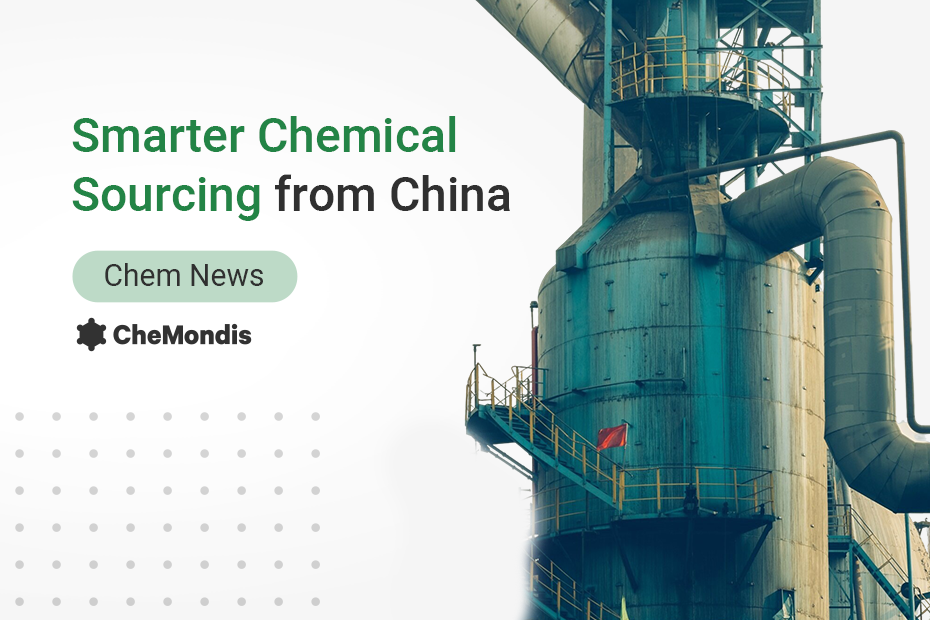Chemical sourcing from China is undergoing a significant shift, driven by changing trade policies and the re-routing of global supply chains. For European buyers, this change brings both opportunities for competitive pricing and challenges around compliance, quality, and trust.
How Chemical Sourcing from China Is Reshaping Europe’s Supply Chains
China’s chemical industry has long been export-driven. But recent changes in international trade policy are accelerating a re-routing of Chinese exports toward Europe. Tariff increases in other major markets have narrowed opportunities elsewhere, prompting Chinese exporters to look more actively at Europe as a growth market.
Trade data shows a clear uptick in shipments of basic organic chemicals to Europe over the past year. Key products driving this growth include:
- Acetic acid
- Formaldehyde derivatives
- TDI/MDI precursors (used in polyurethane production)
This reflects a broader structural shift: as some trade routes contract, others expand, and Europe is becoming a focal point for redirected global chemical flows.
The EU Market: Opening Without Overexposure
European chemical imports have grown notably in recent months, with Chinese producers playing a central role in filling supply gaps. For European buyers, this has translated into greater access to competitively priced goods, especially in categories like polymers, solvents, and specialty intermediates.
Several factors are driving this momentum:
- Large-scale production capacity
- Lower energy costs
- Supportive export measures and efficient port logistics
At the same time, European importers remain focused on compliance and resilience. This isn’t about replacing European production, it’s about augmenting it through smart, globally balanced sourcing.
Strategic Levers and Long-Term Shifts
China’s trade approach remains highly strategic. While export momentum is encouraged, there is also a readiness to adjust supply levers for strategic purposes — as seen in recent restrictions on certain critical materials.
Although these measures have not directly affected mainstream chemicals, they highlight the increasing complexity of cross-border sourcing. The global feedstock landscape also remains sensitive to policy changes, reinforcing the need for agile sourcing strategies that can adapt to shifts in pricing, logistics, and regulations.
For European buyers, this environment underscores the need for agility: sourcing strategies must remain responsive to shifts in policy, pricing, and global logistics.
CheMondis: Your Bridge to Verified Chemical Suppliers in China
At CheMondis, we connect European buyers directly to verified Chinese manufacturers. Our procurement solutions ensure every supplier is vetted for compliance, documentation readiness, and production capabilities.
With our platform, you can:
- Access trusted suppliers for chemical sourcing from China without compromising EU standards
- Diversify your sourcing while reducing risks
- Stay in control of specifications, documentation, and communication
Looking Ahead
The increase in Chinese chemical exports to Europe is more than a response to U.S. tariffs, it’s a marker of a new era in global trade alignment. Rather than viewing this as a zero-sum shift, European companies have an opportunity to make their sourcing smarter, more resilient, and more globally informed.
This doesn’t mean “choosing China”; it means using global options intelligently. With trusted infrastructure, careful supplier qualification, and transparent documentation, companies can future-proof their sourcing.
CheMondis is here to help buyers navigate this complexity. We believe the future of sourcing isn’t about closing borders, it’s about opening the right ones, at the right time, with the right partners.




